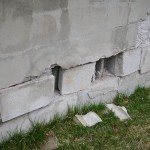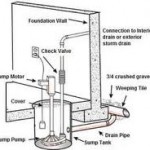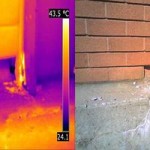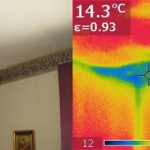At its inception, Barrie was an establishment of houses and warehouses at the foot of the Nine Mile Portage from Kempenfelt Bay to Fort Willow. The Nine Mile Portage is an aboriginal transportation route that existed centuries before Europeans came to Simcoe County. The portage linked Kempenfelt Bay through Willow Creek, connecting Lake Simcoe to the Nottawasaga River which flows into Georgian Bay off Lake Huron.
Barrie played an integral role in the War of 1812. During the War, the city became a supply depot for British forces, and in addition, the Nine Mile Portage was adopted by the British Military as a key piece of their supply line which provided a strategic path for communication, personnel, and vital supplies and equipment to and from Fort Willow and Georgian Bay / Lake Huron. Today, the Nine Mile Portage is marked by signs along roads in Barrie and in Springwater Township. You can follow the scenic path from Memorial Square all the way to Fort Willow.
The city was named in 1833 after Sir Robert Barrie, who was in charge of the naval forces in Canada and frequently commanded forces through the city and along the Nine Mile Portage.
Barrie was also the final destination for one branch of the The Underground Railroad. In the mid-19th century, this network of secret routes allowed many American slaves to enter Barrie and the surrounding area. This contributed to the development (and name) of nearby Shanty Bay.
During World War II the Royal Canadian Navy named a Flower class corvette HMCS Barrie.
On 7 September 1977, a private aircraft dropped altitude to 500 feet (150 m) in dense fog, struck the 1,000-foot (300 m) CKVR-TV tower, killing all five on the plane and destroying the tower and antenna. The station’s 225-foot (69 m) auxiliary tower was also destroyed and there was some damage to the main studio. CKVR were as back on the air using a temporary 400′ tower and reduced power of 40,000 watts at 8:55am on 19 September. The new 1,000-foot (300 m) tower was rebuilt in 1978.[citation needed]
On 31 May 1985, an F4 tornado struck Barrie. It was one of the most violent and deadliest tornadoes in Canadian history.
On 12–13 June 1987, a sculpture called Spirit Catcher by Ron Baird was moved to Barrie from Vancouver, British Columbia, where it had been exhibited as part of Expo ’86. The sculpture was erected permanently at the foot of Maple Avenue on the shore of Kempenfelt Bay. However, with the re-development along the waterfront/Lakeshore Drive, the city is considering moving the Spirit Catcher to the gravel outcropping at the foot of Bayfield Street.
In January 2004, Barrie made international news when its city police raided the former Molson brewery, and found Canada’s largest illegal cannabis grow operation.
Barrie’s Park Place (formerly Molson Park) was chosen to host Live 8 Canada on 2 July 2005.[8] The success of the concert contributed to the resistance to a plan to convert the concert area to a commercial district. However, the stage, buildings and many of the trees on site have been destroyed since construction of the Park Place commercial district has begun.
An explosion in the Royal Thai restaurant, housed in the landmark Wellington Hotel, at the historic Five Points intersection in Barrie’s downtown core occurred at 11:20 PM on 6 December 2007. The fire quickly spread to several neighbouring buildings. Firefighters battled the blaze well into the following morning, requiring assistance from other Simcoe County fire services. Officials estimate the damages to be in the millions. The Wellington Hotel building collapsed. It was over one hundred years old.[9][10] On 17 February 2008, two people were charged in connection with the fire, after the Ontario Fire Marshal’s office concluded the explosion and fire were the result of arson.
LOCATION
Barrie is located in the central portion of Southern Ontario, approximately 90 km (56 mi) north of Toronto within the Greater Golden Horseshoe subregion. It is accessible via Highways 26, 400, 11 and has convenient access to Highway 401, theHighway 407 Express Toll Route and to neighbouring Toronto. Pearson International Airport in Toronto is less than a one hour drive from Barrie via Highway 400.
Barrie’s historic downtown area is situated in a distinct curved or wrapped valley, surrounding the western edge of Kempenfelt Bay. Terrain is generally flat near the city’s centre. Moving up the valley slopes toward the city’s north and south ends, the terrain can be rather steep in some areas.
The city does not have any major rivers within its limits, but does have numerous creeks and streams, most of which empty into Kempenfelt Bay.
| Climate data for Barrie |
| Month |
Jan |
Feb |
Mar |
Apr |
May |
Jun |
Jul |
Aug |
Sep |
Oct |
Nov |
Dec |
Year |
| Record high °C (°F) |
14
(57) |
14
(57) |
24
(75) |
30
(86) |
32
(90) |
35
(95) |
36
(97) |
36
(97) |
33
(91) |
28
(82) |
21.5
(70.7) |
19.5
(67.1) |
36
(97) |
| Average high °C (°F) |
−3.2
(26.2) |
−2
(28) |
3.2
(37.8) |
10.6
(51.1) |
18.1
(64.6) |
23.4
(74.1) |
26.0
(78.8) |
24.8
(76.6) |
20.1
(68.2) |
13.2
(55.8) |
6.1
(43.0) |
0.0
(32.0) |
11.7
(53.1) |
| Daily mean °C (°F) |
−8.1
(17.4) |
−7.1
(19.2) |
−2.2
(28.0) |
5.3
(41.5) |
12.3
(54.1) |
17.7
(63.9) |
20.5
(68.9) |
19.5
(67.1) |
14.9
(58.8) |
8.5
(47.3) |
2.4
(36.3) |
−4
(25) |
6.7
(44.1) |
| Average low °C (°F) |
−12.8
(9.0) |
−12.1
(10.2) |
−7.5
(18.5) |
0.0
(32.0) |
6.5
(43.7) |
12.0
(53.6) |
15.0
(59.0) |
14.2
(57.6) |
9.6
(49.3) |
3.7
(38.7) |
−1.4
(29.5) |
−7.9
(17.8) |
1.6
(34.9) |
| Record low °C (°F) |
−35
(−31) |
−33
(−27) |
−30.5
(−22.9) |
−13
(9) |
−3
(27) |
1
(34) |
6
(43) |
3
(37) |
−1.5
(29.3) |
−6.5
(20.3) |
−19.5
(−3.1) |
−32
(−26) |
−35
(−31) |
| Precipitation mm (inches) |
95.4
(3.756) |
52.8
(2.079) |
57.0
(2.244) |
62.9
(2.476) |
77.3
(3.043) |
86.6
(3.409) |
73.4
(2.89) |
92.6
(3.646) |
97.6
(3.843) |
76.8
(3.024) |
82.6
(3.252) |
83.7
(3.295) |
938.5
(36.949) |
| Rainfall mm (inches) |
15.3
(0.602) |
13.3
(0.524) |
28.9
(1.138) |
57.8
(2.276) |
77.2
(3.039) |
86.6
(3.409) |
73.4
(2.89) |
92.6
(3.646) |
97.6
(3.843) |
74.3
(2.925) |
62.1
(2.445) |
21.3
(0.839) |
700.2
(27.567) |
| Snowfall cm (inches) |
80.2
(31.57) |
39.5
(15.55) |
28.1
(11.06) |
5.0
(1.97) |
0.1
(0.04) |
0
(0) |
0
(0) |
0
(0) |
0
(0) |
2.5
(0.98) |
20.6
(8.11) |
62.4
(24.57) |
238.4
(93.86) |
| Avg. precipitation days (≥ 0.2 mm) |
15.3 |
11.6 |
11.1 |
12.0 |
12.1 |
11.4 |
10.7 |
12.4 |
13.6 |
15.0 |
14.5 |
14.5 |
154.0 |
| Avg. rainy days (≥ 0.2 mm) |
2.7 |
2.8 |
5.2 |
11.0 |
12.1 |
11.4 |
10.7 |
12.4 |
13.6 |
14.8 |
10.6 |
4.3 |
111.5 |
| Avg. snowy days (≥ 0.2 cm) |
13.0 |
9.4 |
6.6 |
1.4 |
0.04 |
0 |
0 |
0 |
0 |
0.54 |
4.4 |
10.8 |
46.3 |
| Source: Environment Canada |
TOURISM
Tourism plays an important role in the local economy. Barrie’s historic downtown and waterfront are at the heart of its tourism industry. Downtown Barrie hosts many older buildings that have been kept up over the years or given new facades that exemplify their historical importance. Many specialty shops, boutiques, pubs and restaurants are located throughout downtown Barrie, most notably along Dunlop Street East. Downtown Barrie is becoming well known for its fashion boutiques, local art, live theatre, indie-music and nightlife scenes.
In addition, downtown Barrie is home to numerous annual festivals and events such as The Barrie Waterfront Festival, Barrielicious, Winterfest, Celebrate Barrie, Ecofest, Jazz & Blues Festival, Promenade Days, Ribfest and Craft Beer Show, Caribfest, Lawnchair Luminata, The New Music Festival, Barrie Film Festival, Santa Claus Parade and the New Year’s Countdown.
In the summer months, the city boasts several beaches including Minet’s Point Beach, Johnsons Beach, The Gables, Tyndale Beach, and Centennial Beach. Boating in also very popular in Kempenfelt Bay and Lake Simcoe as it connects to the Trent Severn Waterway. In 2011, Barrie’s waterfront was under redevelopment, with the relocation of several roadways to provide more greenspace and parkland along the lakeshore.
There are numerous winter recreation activities and facilities in the surrounding area, including skiing, snow tubing and snowboarding resorts, snowmobile trails and ice fishing. Recreational activities include skiing at nearby Horseshoe Resort, Snow Valley, Mount St. Louis Moonstone and Blue Mountain.
EDUCATION
Barrie has two major English school boards that operate inside the city at a public level. The Simcoe County District School Board administers a Public education in Barrie and Simcoe County, while the Simcoe Muskoka Catholic District School Board administers to the Catholic population and serves the Simcoe and Muskoka areas. It also has two French school boards, Le Conseil scolaire de district catholique Centre-Sud and Le Conseil scolaire de district du Centre-Sud-Ouest. There are also several private schools both for K-8 and K-12.
Elementary schools
- Frère André
- Andrew Hunter
- Ardagh Bluffs
- Assikinack
- Codrington
- Cundles Heights
- Emma King
- Hewitt’s Creek
- Hillcrest
- Holly Meadows
- Johnson Street
- Maple Grove
- Mapleview Heights
- Oakley Park
- Ferndale Woods
- Algonquin Ridge
- Allandale Heights
- Pope John Paul
- Portage View
- St. Bernadette
- St. Catherine of Siena
- Steele Street
- St. Nicholas
- Terry Fox
- Timothy Christian
- Trillium Woods
- W.C. Little
- Warnica
- West Bayfield
- Willow Landing
High Schools
- Barrie Central
- Barrie North
- Bear Creek
- Eastview
- Innisdale
- Saint Joseph’s
- Saint Joan of Arc
- Unity Christian
- École Secondaire Catholique Nouvelle Alliance
- Saint Peter’s
Georgian College
Georgian College’s main campus, with over 10,000 full-time students and approximately 25,000 part-time students, is located in Barrie. Georgian College offers a wide varietey of diplomas and is well known in Canada and abroad for many quality programs, an exceptionally high graduate employment rate (94% and the highest in Ontario), and student and employer satisfaction rates.
Georgian College is home to the University Partnership Centre (UPC), which offers numerous Bachelor’s and Master’s degrees from various universities including Laurentian University, York University, Nipissing University, Embry-Riddle University and Central Michigan University. The UPC has been partnering with universities since 1997 and as of 2011, serves over 2400 students. The construction of the Centre for Health and Wellness will ensure Georgian has the capacity to expand its University Partnership Centre to offer even more degree and advanced-degree level studies.
Georgian College is also home to the “Sadlon Centre for Health and Wellness”. Opened in 2011, this $65 million, 165,000-square-foot (15,300 m2) facility has allowed Georgian to double the number of health program students to 3,000 and allows students to pursue health and wellness related certificates, diplomas and degrees, including advanced degree programs. It is also home to a variety of health care services teaching clinics open to the public, as well as leading-edge laboratories and technology-enhanced classrooms.
The recently constructed “Centre for Sustainable Technologies” is also located in Georgian College’s Barrie Campus. This new $8 million, 18,000-square-foot (1,700 m2) facility opened in 2009 and is home to construction and energy-related programming and skills training. The Centre serves as a learning lab with technology and systems that demonstrate where the future of the industry is headed on all building projects.
 Older homes tend to have fuse boxes; newer homes and upgraded electrical systems use circuit breakers. Either device will protect your wiring if used properly. Circuit breaker electrical panels are installed in almost all new home construction. They have become the norm as people find them more convenient, but fuses are still a viable source of protection if used correctly. In most industrial installations, fuses are the preferred method of protection over breakers. When a circuit breaker trips you reset the circuit breaker and “pop”, it trips again, or it trips again when you go back upstairs and turn back on what you were using when it tripped in the first place. At this point you need to stop and identify the root cause of the problem making the circuit breaker trip.
Older homes tend to have fuse boxes; newer homes and upgraded electrical systems use circuit breakers. Either device will protect your wiring if used properly. Circuit breaker electrical panels are installed in almost all new home construction. They have become the norm as people find them more convenient, but fuses are still a viable source of protection if used correctly. In most industrial installations, fuses are the preferred method of protection over breakers. When a circuit breaker trips you reset the circuit breaker and “pop”, it trips again, or it trips again when you go back upstairs and turn back on what you were using when it tripped in the first place. At this point you need to stop and identify the root cause of the problem making the circuit breaker trip.







Recent Comments